
Rockford is an unincorporated community and former town in southern Surry County, North Carolina, United States.

Tifton Commercial Historic District, in Tifton in Tift County, Georgia, is a historic district that was listed on the National Register of Historic Places (NRHP) in 1986 and expanded in 1994. The original listing was portions of 10 blocks including buildings from the 1890s to the late 1930s, most built of brick.

The Springfield Schoolhouse, in Springfield, Colorado, is an 1889 rural schoolhouse built with sandstone quarried east of town. It is 53 by 33 feet in plan. It served as a school until 1920 when it became a Masonic Lodge. It has been known as Springfield Masonic Temple. It originally had a belfrey with school bell, but these elements were lost at some undetermined time.

The Crane Hill Masonic Lodge is a historical Masonic building in Crane Hill, Alabama. Built in 1904, it is listed on the National Register of Historic Places.
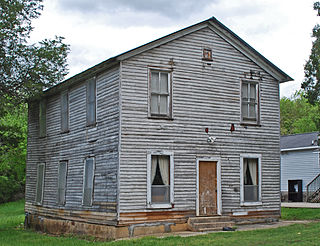
The Chickamauga Lodge No. 221, Free and Accepted Masons, Prince Hall Affiliate, also known as Chickamauga Masonic Lodge No. 221, was built in 1924. It was listed on the National Register of Historic Places in 2006.

The Royal Arch Masonic Lodge in Austin, Texas is a three-story beige brick Masonic building that was built in Beaux Arts style in 1926. It was designed by Texas architects J. B. Davies and William E. Ketchum. It was listed as a historic landmark by the city of Austin in 2000, and it was listed on the National Register of Historic Places in 2005.
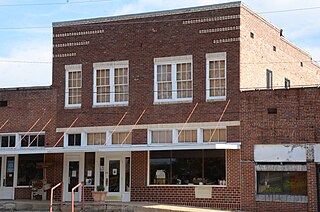
The Hampton Masonic Lodge Building in Hampton, Arkansas is an Early Commercial style building that was built in 1920. As originally designed the building had commercial store space on the first floor, and rooms for both the Hampton Masonic Lodge and the Farmers Home Administration on the second floor. In 1954, the building was acquired by the Western Auto Store, and the second floor was turned into a toy department. It was listed on the National Register of Historic Places in 2008.

The Masonic Temple Building in Viroqua, Wisconsin was built in the Classical Revival style. It was designed by architects Albert E. Parkinson and Bernard Dockendorff and was listed on the National Register of Historic Places in 2000.

The Camden Masonic Temple, also known as Mount Zion Lodge #211, is a historic Masonic Lodge located at Camden, Carroll County, Indiana. It was built in 1902, and is a three-story Romanesque Revival style brick and limestone building. It was used historically as a meeting hall, as a specialty store, as a department store, as a professional building, and as a multiple dwelling.

The Brewster Building is a historic commercial building and IOOF Hall located at 201 Fourth Street in Galt, California. It was built in 1882 and was listed on the National Register of Historic Places in 2000.

The Vermont Masonic Hall, also known as the Vermont Hardware Store Building, is a historic Masonic Lodge located on North Main Street in Vermont, Illinois. The hall was built in 1891-92 for Vermont's Lodge No. 116 of Ancient, Free and Accepted Masons, which was formed in 1852. At the time the hall was built, secret societies were enjoying a wave of popularity in America, with the Masons preeminent among them; Vermont was no exception to this trend, and its Masons played an important role in the city's social life. The hall was a two-story commercial building; the Masons leased the second floor, while a hardware store operated on the first. The brick building features an elaborate iron storefront; its design, along with the lodge itself, led it to be considered of the best Masonic lodges in western Illinois.
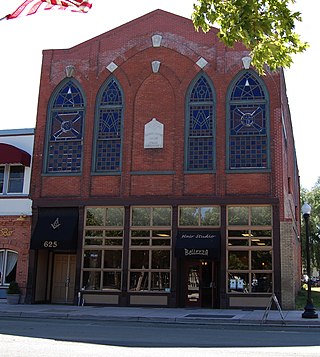
The Stanley Y. Beverley Lodge #108' building, is a historic building located in Suisun City, California, built in 1855. It was designed by Hiram Rush. The building served as a Prince Hall Masonic Lodge and as a business. It was listed on the National Register of Historic Places in 1978 as "Suisun Masonic Lodge No. 55". The building has also been known locally as the Stanley Beverly Lodge building.
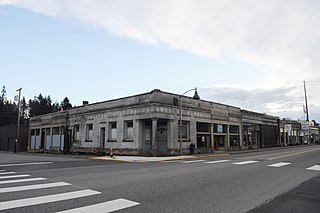
The Tenino Downtown Historic District is two blocks long, one-half block-deep on either side of Sussex Street in Tenino, Washington. Approximately three acres in size, the district was added to the National Register of Historic Places on June 25, 2004. Sussex Street is the main thoroughfare through Tenino and is also part of Washington State Route 507.

The Fairmount–Southside Historic District is a 340-acre (140 ha) historic district that has been listed on the National Register of Historic Places since 1990. The district is roughly rectangular in shape.

Casselton Commercial Historic District is a 9.3-acre (3.8 ha) historic district in Casselton, North Dakota that was listed on the National Register of Historic Places in 1982.
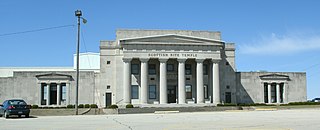
The Cedar Rapids Scottish Rite Temple, also known as the Scottish Rite Masonic Center, is a historic building located at 616 A Avenue, Cedar Rapids, Iowa. It is listed on the National Register of Historic Places (NRHP) as Consistory Building No. 2

The Oregon Masonic Hall or Oregon Masonic Lodge is a highly-intact 1898 building in Oregon, Wisconsin - with the second story finely decorated using cream and red brick and red sandstone. It was listed on the National Register of Historic Places in 1992.

The Masonic Temple, also known as the A.F. & A.M. Hall, Masonic Building, Greeley Building, and the Octagon Center for the Arts, is a historic building located in Ames, Iowa, United States. Built between 1916 and 1917, the three-story, brick, Neoclassical building was designed by the Des Moines architectural firm of Liebbe, Nourse & Rasmussen. It was commissioned by Wallace M. Greeley, an Ames banker and civic leader. The building was built at the high point of Progressive era construction in the central business district, and with several other noteworthy public and semi-public buildings, marked Ames' transition from a rural town to a modern city. Arcadia Lodge #249 occupied the third floor of the building from its completion in 1917 to 1997, when they built a new building on Alexander Avenue.

The Milton Masonic Lodge and County General Store in Milton, Kentucky was listed on the National Register of Historic Places in 1983.





















